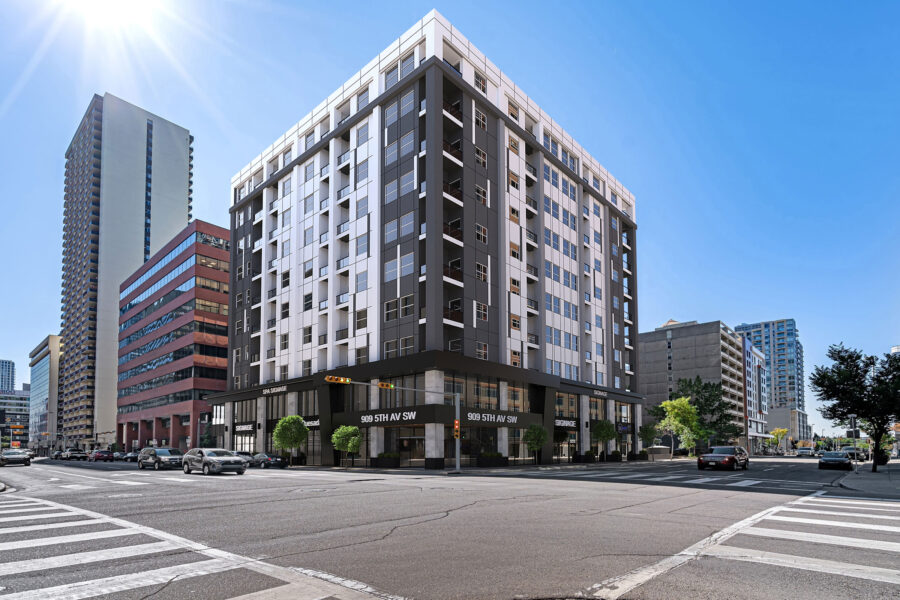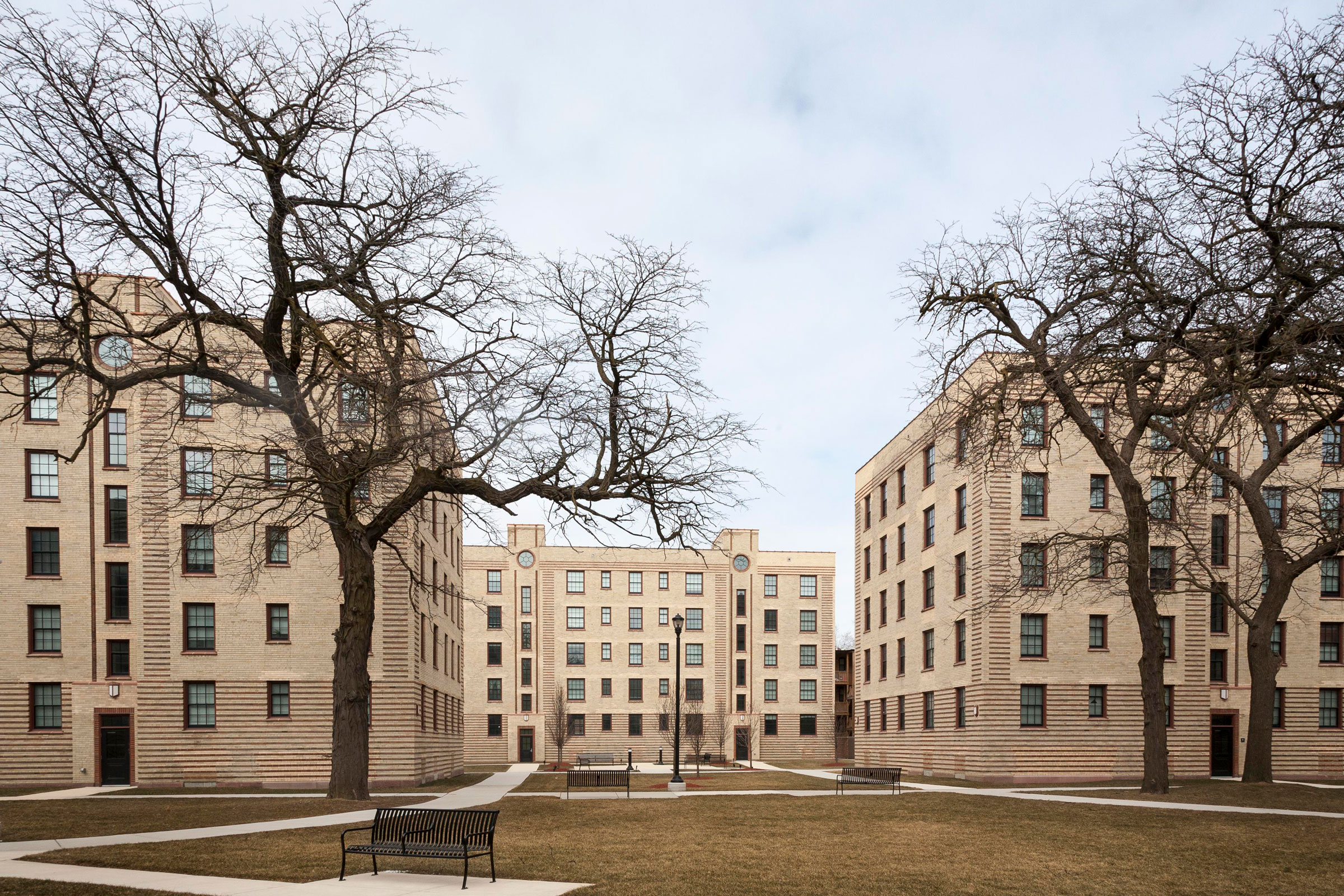Story at a glance:
- America’s scarce affordable housing supply calls for an all-hands-on-deck approach.
- Design teams should focus on adaptive reuse as a supplement to new construction.
In the midst of climate change’s existential threat, people living in the United States face another pervasive and distressing crisis: housing access. There is a national undersupply of all housing types, with the least inventory available to low-income households. Lack of housing affordability is affecting 42 million people, or nearly one-third of US households. NPR reported that in 2023 almost 85% of houses for sale were unaffordable to the average US household.
Post-pandemic, nearly half of all renters were cost-burdened, spending more than 30% of their income on housing, according to a 2023 study by the Joint Center for Housing Studies of Harvard University. Concerns about housing access and affordability are nearly universal across the nation, despite geographic, demographic, and economic differences.
The focus on new construction alleviating the crisis overlooks a critical housing solution—adaptive reuse. Adapting existing buildings to housing increases the overall supply when converting places originally designed for another use. Our oversupply of older commercial, institutional and industrial buildings, especially commercial, is a housing opportunity. Nearly 800 older commercial buildings across the nation were converted to apartments between 2010 and 2020, with 65% of those units aimed at low-to-middle income renters. Approximately 17.5 billion square feet of commercial space in the US is vacant and potentially adaptable for affordable housing.
The vast majority of affordable rental housing is in older, unsubsidized buildings. Of our country’s 12 million affordable units, 9 million are categorized as “naturally occurring,” or those not subsidized by federal programs, according to The Washington Post. This naturally occurring affordable housing, or NOAH, often means small- or mid-sized rental buildings that are more than 35 years old and particularly vulnerable because investors purchase them at low cost, renovate, and subsequently raise rents. Maintaining these units, and their affordability, is an imperative strategy to reduce housing shortages.
Preserving and reusing existing buildings has added financial, social, and environmental benefits. Adaptive reuse projects can tap into existing infrastructure, thereby reducing construction costs, and the product can get to market faster and people benefit from remaining in communities where they have established social networks.

The Cornerstone is the City of Calgary’s first completed building from their residential conversion program. Calgary has the best approvals and incentive programs in North America, and most projects also happen to include affordable housing. Rendering courtesy of Astra
Reuse is also planet-friendly. Building construction and operation contributes 37% of global carbon emissions, the single largest source of greenhouse gasses. Reusing buildings reduces new construction emissions, and energy-efficient upgrades added alongside renovations reduce operational carbon. Because approximately two-thirds of the nation’s 112 million buildings will still be in use in 2040, improving their energy performance is necessary to reach carbon reduction targets, according to Architecture 2030. Funds coming online from the federal Inflation Reduction Act and the Greenhouse Gas Reduction Fund will make energy efficiency, decarbonization, and climate resilience improvements more affordable.
A number of informational, regulatory, and financial steps could expand affordable housing adaptive reuse. When preservation and housing agencies and nonprofit organization collaborate, they leverage each other’s knowledge and networks to save time and increase effectiveness. Together they can be proverbial matchmakers, introducing developers to historic buildings that are viable for housing reuse—especially those eligible for federal and state housing and historic tax credits. Providing market data, sample pro forma, and case studies to developers can expedite the pre-development process and get housing to market that much faster. Regulatory agencies can ensure concurrence between codes and allow responsive housing alternatives like accessory dwelling units and micro-units. Historic property regulatory review must also become more reasoned, flexible and compromising on the strict retention of historic material if it is to be a greater contributor to affordable housing market.
In the end the most significant factor hindering housing creation through adaptive reuse is the dearth of accessible and affordable financing. Existing federal, state, and local government-backed incentives need to become more user-friendly and better position adaptive reuse as a viable affordable housing strategy. Preserving NOAH, the vast majority of the nation’s affordable units, is about incentivizing property owners to maintain rental rates while continuing to make building improvements. For example, in exchange for a rent stabilization commitment, NOAH property owners could qualify for no- or deeply discounted loans, tax credits, tax abatement or grants. Land trusts and real estate investment trusts have become tools for local investment maintaining affordability in existing buildings and neighborhoods. Albeit requiring a host of supportive systems for the aforementioned programs, an incentives-based, voluntary approach can parallel regulatory affordability mandates.
America’s housing crisis requires and all-hands-on-deck approach. Activists, the nonprofit and for-profit development community, policymakers, and public officials are responding with innovative local initiatives and tools while awaiting a comprehensive national housing strategy. The US Government Accountability Office acknowledges that federal efforts to support affordable housing could improve, yet the call for a national housing crisis commission have seemingly gone unanswered.
Preservation and adaptive reuse remain ready solutions to respond to America’s housing need in the interim. Just as destroying historic places can untether communities, saving them can help maintain vital connections while responding to society’s critical need for sustainability, justice, equity, and job creation. Taking a new look at our old buildings can help everyone in our communities have a place to call home.



